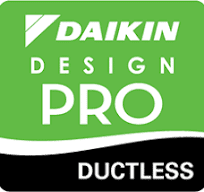When it comes to making your home more energy-efficient, comfortable, and cost-effective, insulation lays the foundation. But with so many types of insulation available, how do you choose the right one? It all starts with understanding the R-value of insulation.
If you’ve ever looked into insulation before, you’ve probably seen R-values mentioned—but what do they really mean? What are the right insulation R-values for Central New York’s ever-changing climate?
In this post, Energy Savers breaks down the basics of R-value, compares different insulation materials, and helps you determine the best fit for your home.
What Is R-Value and Why Does It Matter?
R-value is a measure of how well an insulation material resists heat flow. The higher the R-value, the better the material insulates. Insulation materials with high R-values are more effective at keeping heat in during the winter and out during the summer.
R-Values Vary by Insulation Type
Not all insulation is created equal. Different materials have different R-values per inch of thickness. Here’s a quick look at some common types:
| Insulation Type | R-Value per Inch (Approximate) |
| Fiberglass batts | R-2.9 to R-3.8 |
| Cellulose (blown-in) | R-3.2 to R-3.8 |
| Spray foam (open-cell) | R-3.5 to R-3.9 |
| Spray foam (closed-cell) | R-6.0 to R-7.0 |
| Rigid foam board | R-4.5 to R-6.5 |
It’s important to note that the R-value listed is per inch when installed correctly, so a thicker layer provides more insulation. But insulation material choice also matters because certain types offer better air sealing or moisture resistance—two key factors in long-term energy performance.
What R-Value Does Your Home Need?
The U.S. Department of Energy recommends different R-values depending on where you live and which part of your home you’re insulating. New York falls into Climate Zone 5, meaning:
- Attics should be insulated to R-49 to R-60
- Walls should be R-13 to R-21
- Floors over unconditioned spaces (like garages or crawl spaces) should be at least R-25 to R-30
If your home was built decades ago, chances are it’s under-insulated, especially the attic and walls. Adding or upgrading insulation can lead to noticeable improvements in both comfort and energy savings.
More Than Just R-Value: Air Sealing Matters Too
While R-value is a critical factor, it’s not the only thing that determines how well your home retains and blocks out heat. Air leakage through gaps around windows, doors, wiring, and framing can significantly reduce insulation effectiveness.
That’s why Energy Savers doesn’t just focus on R-value alone. We combine insulation with professional air sealing to ensure your home performs as a system, keeping conditioned air inside where it belongs.
We will recommend the best insulation and air sealing materials for the specific area you are insulating. For example, spray foam insulation offers both a high R-value and excellent air sealing properties, making it ideal for Central NY basements, rim joists, and attic knee walls. In other areas, we may recommend blown-in cellulose for dense packing into walls or rigid foam board to insulate and protect exterior foundations.
How to Choose the Right Insulation for Your Home
There’s no one-size-fits-all answer. The best insulation depends on your home’s unique characteristics, current insulation levels, and your energy goals. At Energy Savers, we start with a comprehensive home energy audit to identify where your home is losing energy and where better insulation can help.
Our BPI-certified team looks at:
- Existing insulation levels
- Air leakage hotspots
- Moisture or mold concerns
- Heating and cooling loads
- Overall home performance
Then, we develop a custom plan to improve comfort and energy efficiency. Whether it’s adding attic insulation, sealing up the basement, or replacing drafty windows, every step is designed to help your home work better and save you money.
The Bottom Line: R-Value Is Just the Beginning
Understanding R-value is an important step in choosing the right insulation, but it’s just part of the picture. Material choice, air sealing, moisture control, and installation quality all work together to determine how well your home’s insulation performs.
If you’re ready to boost comfort, reduce your energy bills, and prepare your home for unpredictable weather, Energy Savers is here to help.







